I am looking for Ph.D. and Master students.
If you are interested in
working with me please contact me via e-mail (maier@math.tamu.edu).
Research
My principal field of research lies in the finite element simulation of physical problems with two-scale and multiscale phenomena. These are modeling problems where relevant physical processes act on highly different length and time scales. Examples include flow in porous media and optical phenomena with a response on a much finer length scale than the surrounding electromagnetic wave. In particular, I work on numerical simulation techniques for problems with multiscale character, as well as, a posteriori error estimation and adaptive strategies in the context of multiscale finite-element methods. A posteriori error estimation is the quantitative assessment of the approximation error made during a numerical computation. It allows one to iteratively improve the result by locally adapting refinement parameters, or—as part of a multiscale method—adjusting effective model parameters.
The nature of the problems I investigate make my research collaborations highly interdisciplinary. They range from mathematical topics in applied and numerical analysis, and scientific computing, to computer science and software engineering, as well as theoretical physics and electrical engineering.
Optical multiscale effects in Maxwell's equations
Supported by NSF Award DMS 1912847 and NSF CAREER Award DMS 2045636
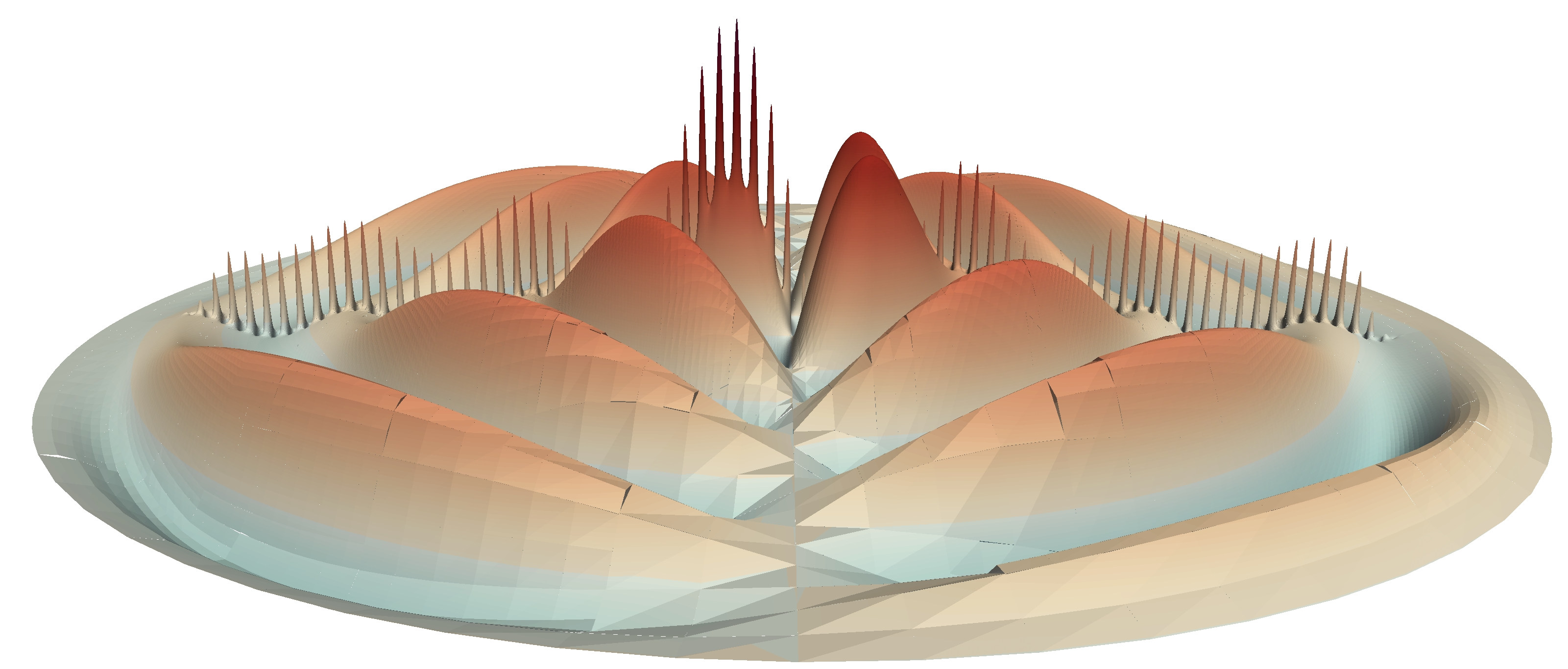
Highly oscillatory surface plasmon polariton excited along an
infinite sheet of graphene within the primary field of a Hertzian
dipole. Computed with a goal-oriented, adaptive finite element
solver (10.1016/j.jcp.2017.03.014).
Over the last 6 years my research has focused on multiscale phenomena in Maxwell's equations. A very interesting and challenging example is the behavior of so-called surface plasmon polaritons (SPPs). These are high-frequency, electromagnetic waves that are created due to unique material properties of special 2D materials such as graphene. They open up new sub-wavelength optical applications `beyond the diffraction limit.' The scale separation in terms of highly different wavelengths creates a challenging task for the numerical simulation of SPPs. My current research in this area centers around analytical aspects of SPPs, robust and efficient finite element simulations, optical device and waveguide simulation, and analysis and simulation of heterogeneous, layered materials.
Current research directions include:
- Physical aspects of wave propagation on 2D metamaterials
- Shape optimization of nanoscale optical devices (research project of my graduate student Manaswinee Bezbaruah): We investigate the well-posedness and numerical solution of shape optimization problems arising in the context of homogenization of novel optical devices.
- Analytic homogenization results and analytic characterization of emergent optical behavior.
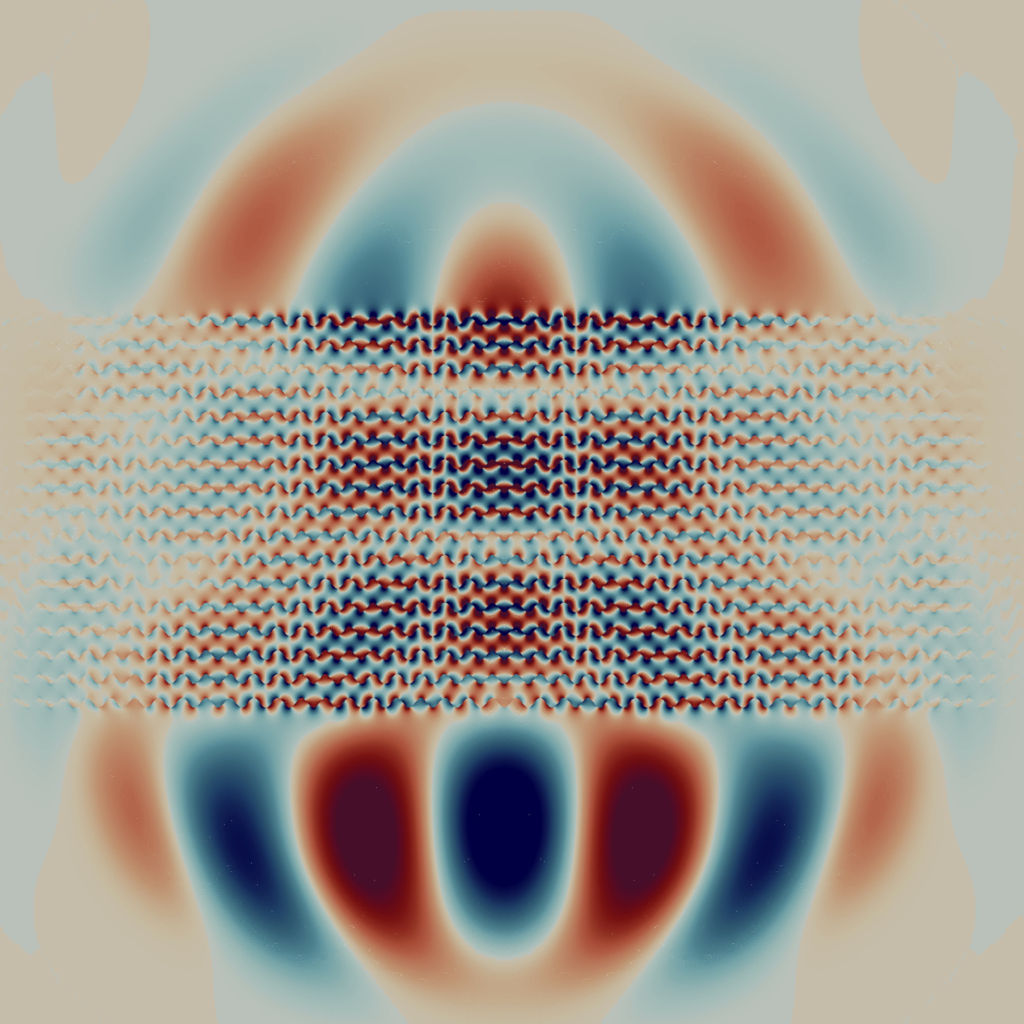
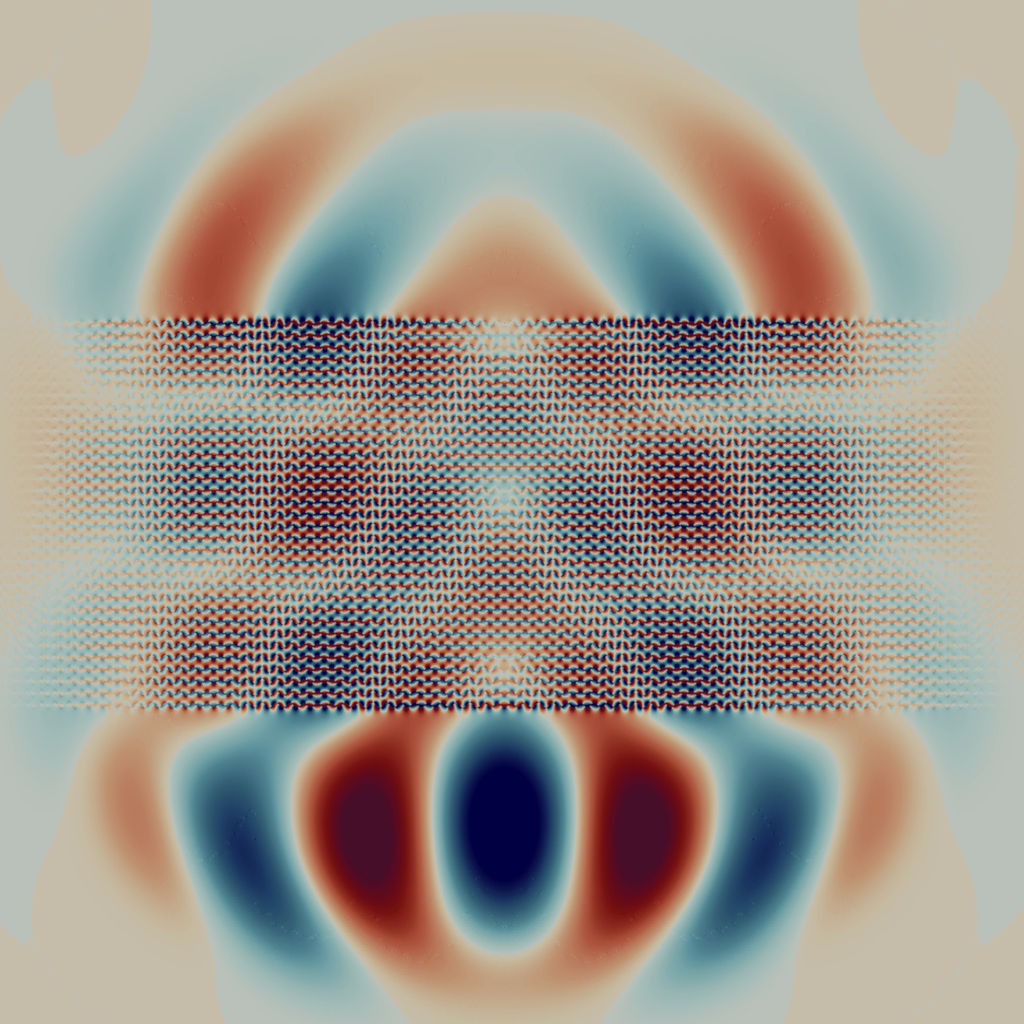
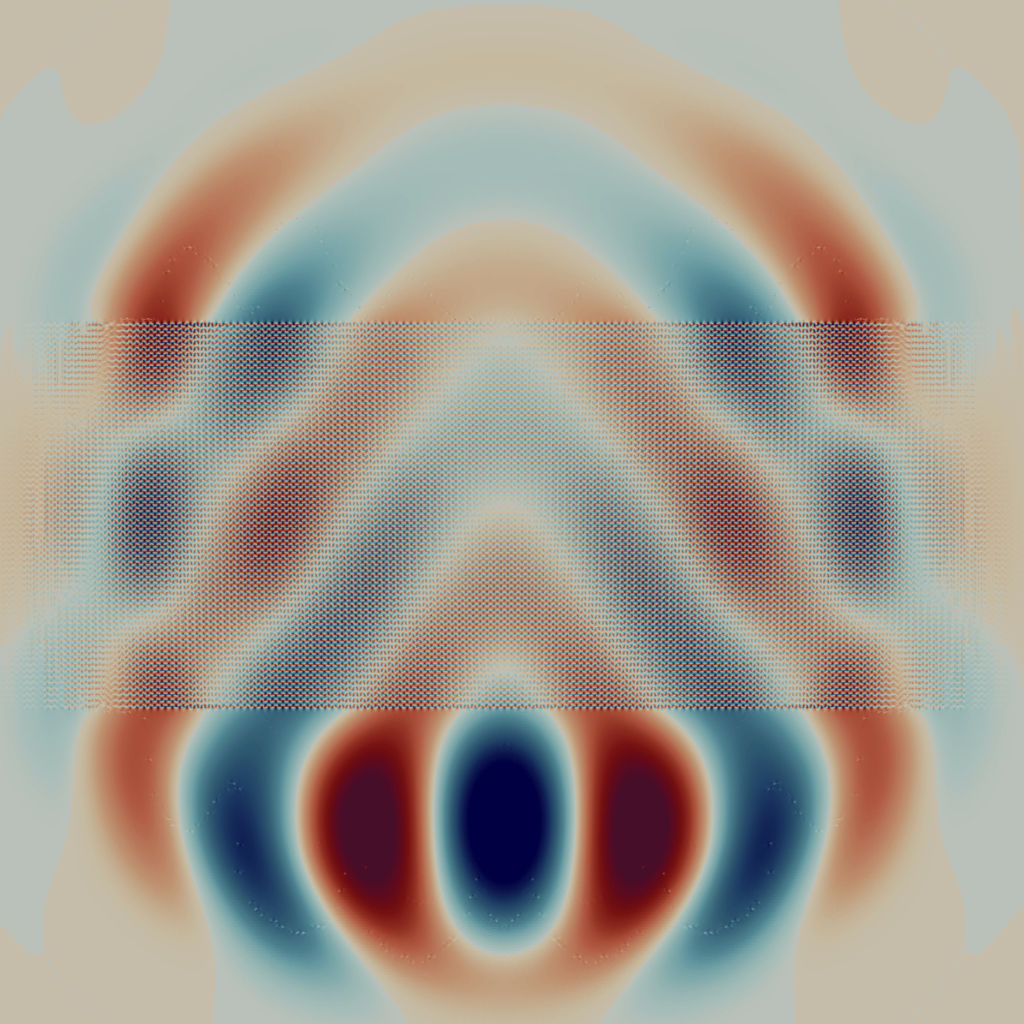
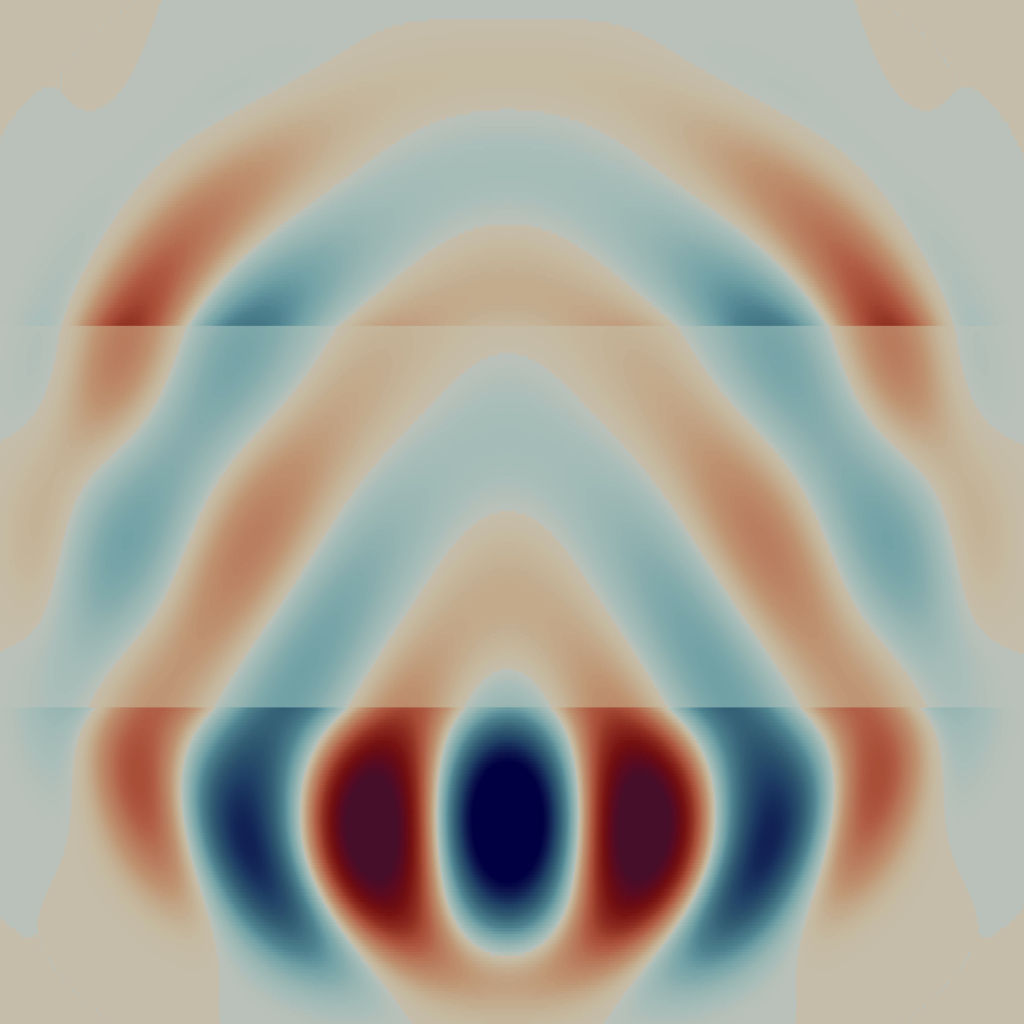
From left to right: Direct numerical simulation of scattering on a
plasmonic crystal consisting of bended layers of graphene with
increasing degree of scale separation, and the corresponding
homogenization limit. Computed with a a multiscale method based on
homogenization results for plasmonic crystals with conducting 2D
hypersurfaces
(10.1098/rspa.2019.0220,
10.1016/j.cam.2020.112909).
Large scale high-performance computation of hyperbolic conservation laws
Supported by NSF CAREER Award DMS 2045636 and AFOSR FA9550-23-1-0007
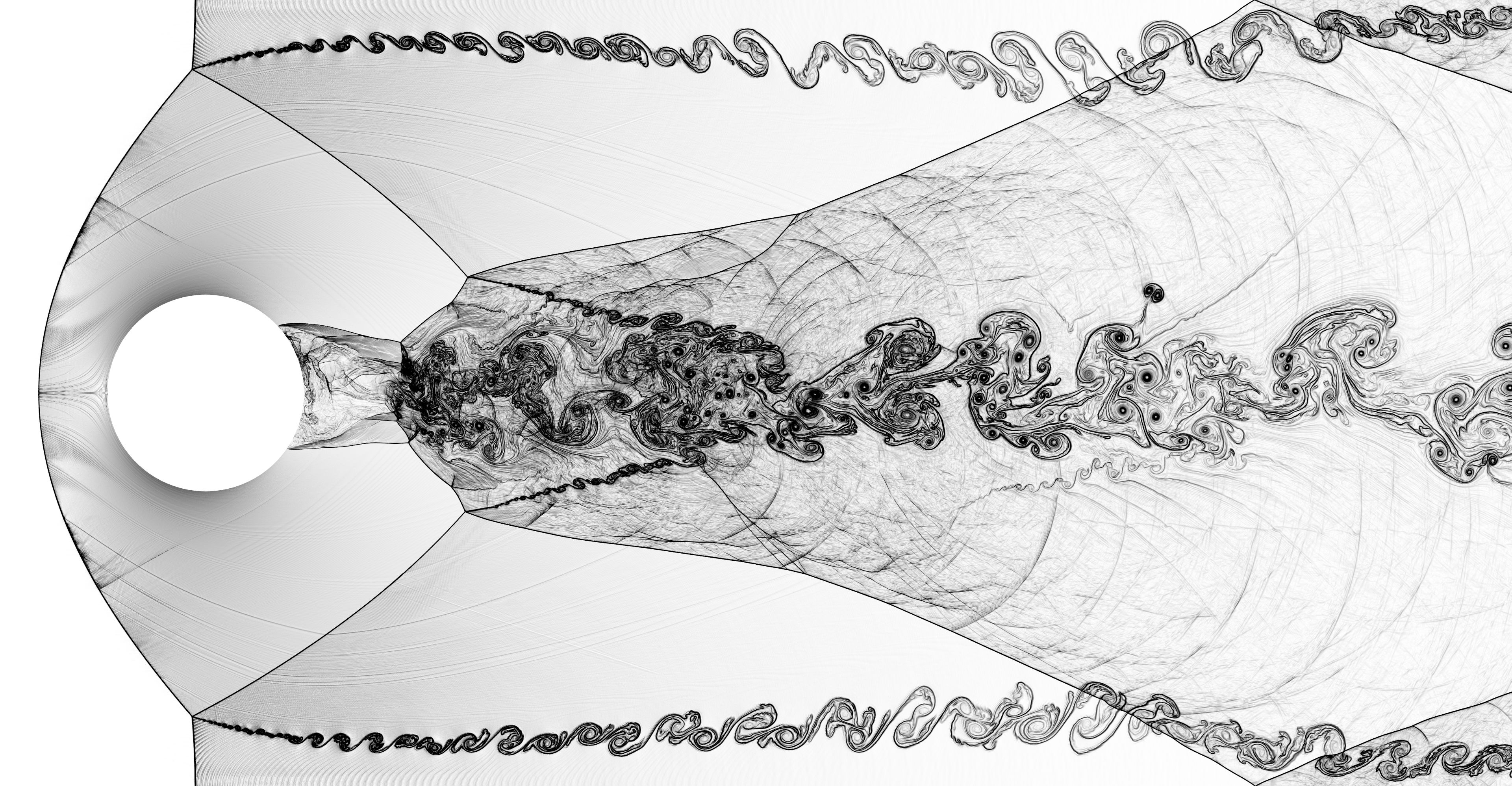
2D Mach 3 compressible Euler flow around a disc: 38 million
unstructured Q_1 nodes, Schlieren-like plot at t=3.5
(arXiv preprint).
Youtube video.
This research direction is concerned with large scale high-performance computation of hyperbolic conservation laws such as the compressible Euler equations, the compressible Navier-Stokes equations, or the Euler-Poisson system. Our methods possess strong, physically diserable, stability properties, meaning, the schemes guarantee that the numerical approximations maintain an invariant set of physical properties.
Current research directions include:
- Massively parallel 3D computation of hyperbolic conservation laws with invariant-domain preserving high-order approximation techniques: We demonstrated scalability of our research codes to 90 billion spatial degrees of freedom running on 100 thousand computing nodes.
- Approximation techniques for coupled Euler-Poisson and Euler-Maxwell systems: We investigate numerical building blocks for robustly solving coupled optical - hydrodynamical systems.
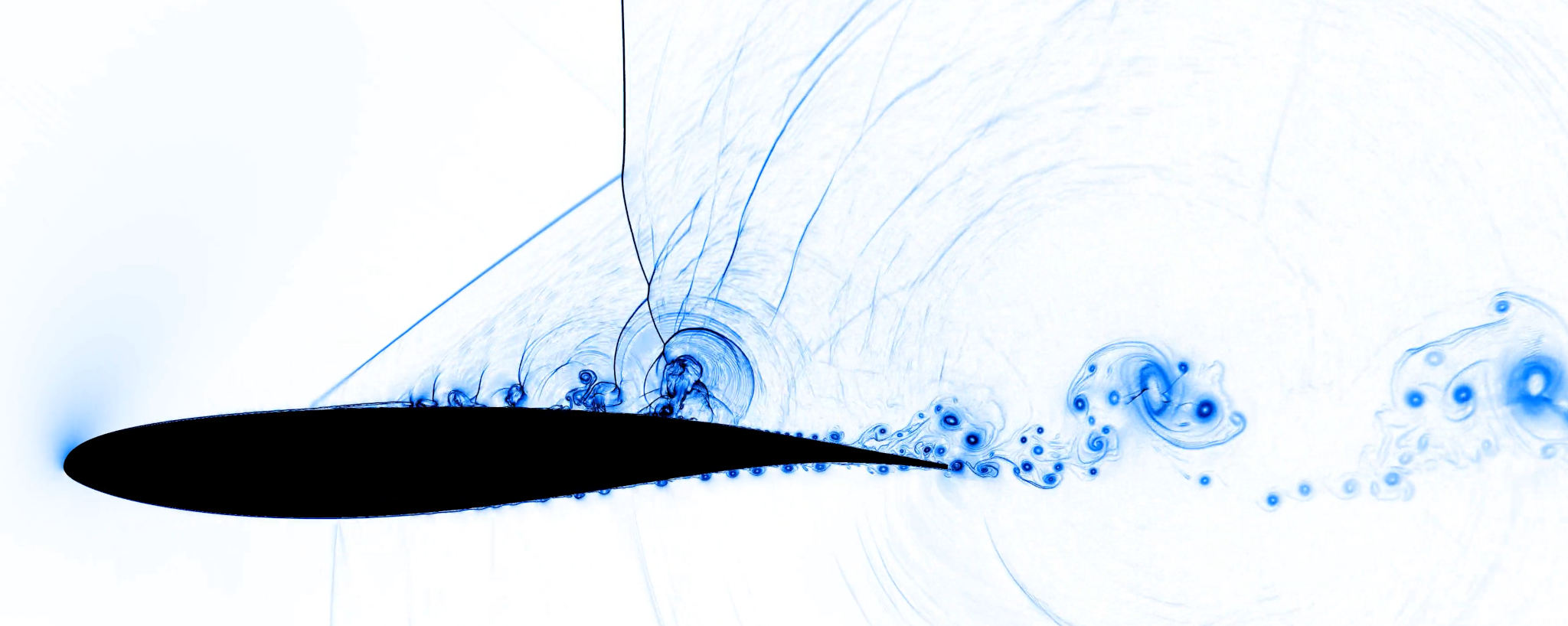
Transonic 2D flow (compressible Navier-Stokes
equations) around Onera OAT15a airfoil at Mach 0.73.
(arXiv preprint).
Youtube
video.
Finite element methods and finite element software
As one of the Principal Developers of the deal.II Project I have contributed a significant amount of source code and improvements to deal.II (over 3200 commit changesets to the public repository). The library offers high performance computing capabilities ranging from thread-level parallelization to fully distributed MPI applications. On average, over 160 scientific publications per year are based on deal.II, accumulating to over 1000 scientific publications in total. More than 200 people have contributed to the project over the years.
My contributions range from infrastructure maintenance, rewrite of the build system, low-level mesh handling, grid and solution transfer operations, to the implementation of periodic boundary conditions, new finite elements, general interpolation algorithms, as well as an abstract expression syntax for linear operations.